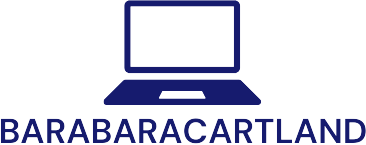Table of Contents
ToggleIn a world where “lost in translation” is more than just a funny meme, mastering a new language can feel like trying to juggle flaming swords while riding a unicycle. But fear not! With the right language learning techniques, anyone can transform from a bewildered tourist into a confident conversationalist.
Overview of Language Learning Techniques
Language learning techniques encompass various methods designed to enhance understanding and fluency. These methods interact with each other to create a comprehensive learning experience.
Immersion represents one effective technique. Engaging in conversations, listening to native speakers, and consuming media in the target language reinforces the learning process. Language learners often find that immersion accelerates retention and comprehension.
Repetition plays a crucial role as well. Rehearsing vocabulary and phrases multiple times aids memorization. This technique helps solidify knowledge and makes it easier to recall information during conversations.
Practice stands as another vital component. Regular speaking, writing, and listening practice empowers learners to apply what they’ve studied. Structured practice sessions improve confidence and proficiency.
Use of Technology significantly enhances learning. Language learning apps, online courses, and podcasts provide additional resources. These tools offer flexibility and adaptability to individual learning speeds.
Flashcards serve as an effective memorization technique. Creating flashcards for vocabulary terms, grammar rules, and phrases enables targeted study. Visual aids help reinforce learning and improve recall.
Language Exchange provides practical benefits. Engaging with native speakers through language exchanges fosters real-world practice. This method allows learners to understand cultural nuances and idiomatic expressions directly.
Goal Setting ensures learners remain focused. Establishing specific, measurable, attainable, relevant, and time-bound (SMART) goals aids in tracking progress. This technique fosters motivation and accountability throughout the learning journey.
Combining these techniques creates a synergistic effect, enhancing language acquisition. Adopting multiple approaches enables a richer, more effective learning experience. Learners can thrive in their language pursuits by utilizing these diverse methods.
Popular Language Learning Techniques
Effective language learning techniques can significantly enhance the language acquisition experience. Various methods cater to different learning styles, helping learners gain confidence and fluency.
Immersive Learning
Immersive learning involves surrounding oneself with the target language through various media and interactions. Engaging with native speakers fosters an authentic understanding of cultural nuances. Consuming television shows, movies, and music in the target language provides context and builds conversational skills. Utilizing language apps that encourage real-life conversations also enhances retention and comprehension. Immersive environments promote continual exposure to vocabulary and grammar, helping learners internalize language more naturally.
Spaced Repetition
Spaced repetition serves as a powerful memorization technique for vocabulary and phrases. By revisiting material at strategically increasing intervals, learners reinforce memory retention. This method capitalizes on the brain’s natural learning patterns, ensuring that information moves from short-term to long-term memory. Many language learning apps incorporate spaced repetition algorithms to optimize practice sessions. As a result, learners can efficiently remember new words and expressions while reducing the chances of forgetting.
Conversational Practice
Conversational practice offers practical experience in using a new language effectively. Engaging in regular conversations with fluent speakers builds confidence and improves speaking skills. Language exchange partners or conversation groups provide opportunities to practice in a low-pressure environment. This technique enables learners to apply vocabulary and grammar rules while gaining immediate feedback. Consistent interaction focuses on real-life applications, making the learning process enjoyable and relevant.
Technology in Language Learning
Technology significantly enhances language learning experiences, offering diverse resources and methods. Learners can access many tools that cater to different styles and preferences.
Mobile Apps
Mobile apps streamline language learning by providing lessons and practice at one’s fingertips. Popular apps like Duolingo and Babbel offer gamified experiences that keep learners engaged. Features such as speech recognition help improve pronunciation, while vocabulary games reinforce retention. Users can track progress and set daily goals, which motivates consistent practice. Many apps also include social features, allowing learners to connect with peers and engage in friendly competition. This accessibility encourages learners to integrate language practice into their daily routines.
Online Courses
Online courses provide structured learning environments that accommodate various schedules. Platforms like Coursera and Rosetta Stone enable learners to access high-quality content from renowned institutions. Course offerings often include video lectures, interactive exercises, and assessments to gauge progress. Learners appreciate the flexibility of studying at their own pace while receiving feedback from instructors. This blend of technology and education promotes a deeper understanding of grammar, vocabulary, and conversational skills. Additionally, many online courses emphasize cultural insights, enriching the overall learning experience.
Language Exchange Platforms
Language exchange platforms connect learners with native speakers worldwide. Websites like Tandem and HelloTalk facilitate real-time conversations, allowing for practical language application. Users can practice speaking or writing in their target language while helping others with their own language skills. This reciprocal method fosters cultural exchange, enhancing linguistic and social understanding. Learners benefit from direct feedback on their language use and gain confidence through casual conversation. Many platforms also offer topic suggestions and correction tools, making it easier to engage in meaningful dialogue.
Effective Strategies for Different Learning Styles
Tailoring language learning strategies to individual learning styles enhances engagement and retention. Effective approaches target visual, auditory, and kinesthetic learners.
Visual Learners
Visual learners benefit from graphic elements that enhance language retention. Using flashcards with images reinforces vocabulary understanding. Incorporating infographics helps clarify grammar rules. Watching videos in the target language immerses learners in context and intonation. Online resources like visual language platforms connect visuals with words, providing engaging content. Organizing vocabulary themes visually facilitates easier recall. Learners should also create mind maps that visually represent relationships among words and concepts, making the learning process interactive.
Auditory Learners
Auditory learners thrive on listening and verbal interaction. Engaging with podcasts and audio lessons establishes a solid language foundation. Participating in language-focused discussions promotes active listening and spoken fluency. Utilizing music exposes learners to rhythmic patterns and vocabulary in context. Additionally, practicing pronunciation through repetition aids in developing clear speech. Learners should record themselves speaking to track pronunciation progress and identify areas of improvement. Group conversations or language clubs amplify real-time learning through peer interaction, making the experience dynamic and enjoyable.
Kinesthetic Learners
Kinesthetic learners excel through physical engagement and movement. Incorporating role-play activities simulates real-world conversations, deepening language skills. Using gestures and actions paired with vocabulary reinforces memory through physical activity. Interactive games that require movement stimulate engagement and promote learning through play. Practicing vocabulary through cooking or crafting projects provides practical context and enjoyment. Writing out new words while standing or walking boosts retention. Immersing learners in cultural experiences strengthens connections to the language. Each physical interaction enhances retention and real-life application.
Mastering a new language is an attainable goal when learners embrace effective techniques tailored to their individual styles. By immersing themselves in authentic experiences and utilizing technology, they can enhance their understanding and fluency.
Practicing regularly with native speakers builds confidence and reinforces skills. Incorporating methods like spaced repetition and goal setting further solidifies their progress.
Ultimately, the journey of language learning is personal and adaptable. With dedication and the right strategies, anyone can transform challenges into achievements, fostering a lifelong love for languages.




